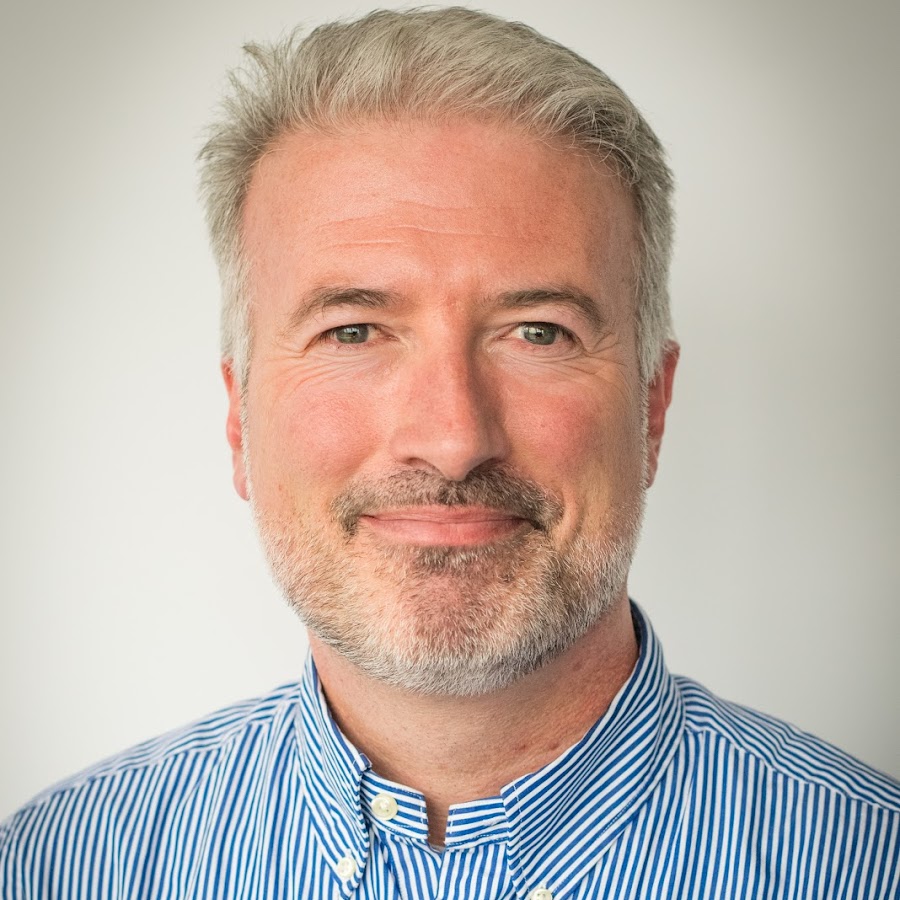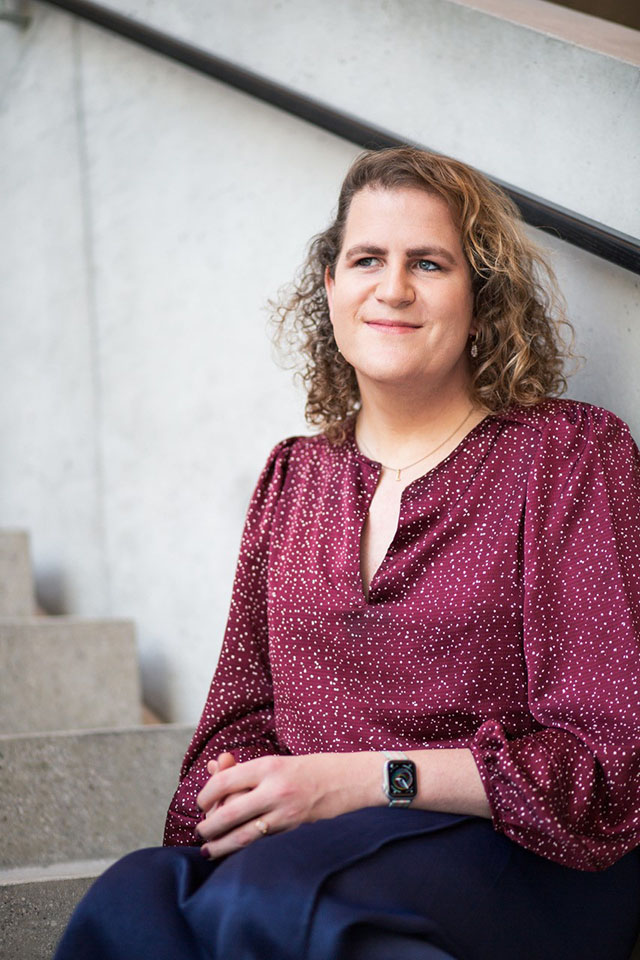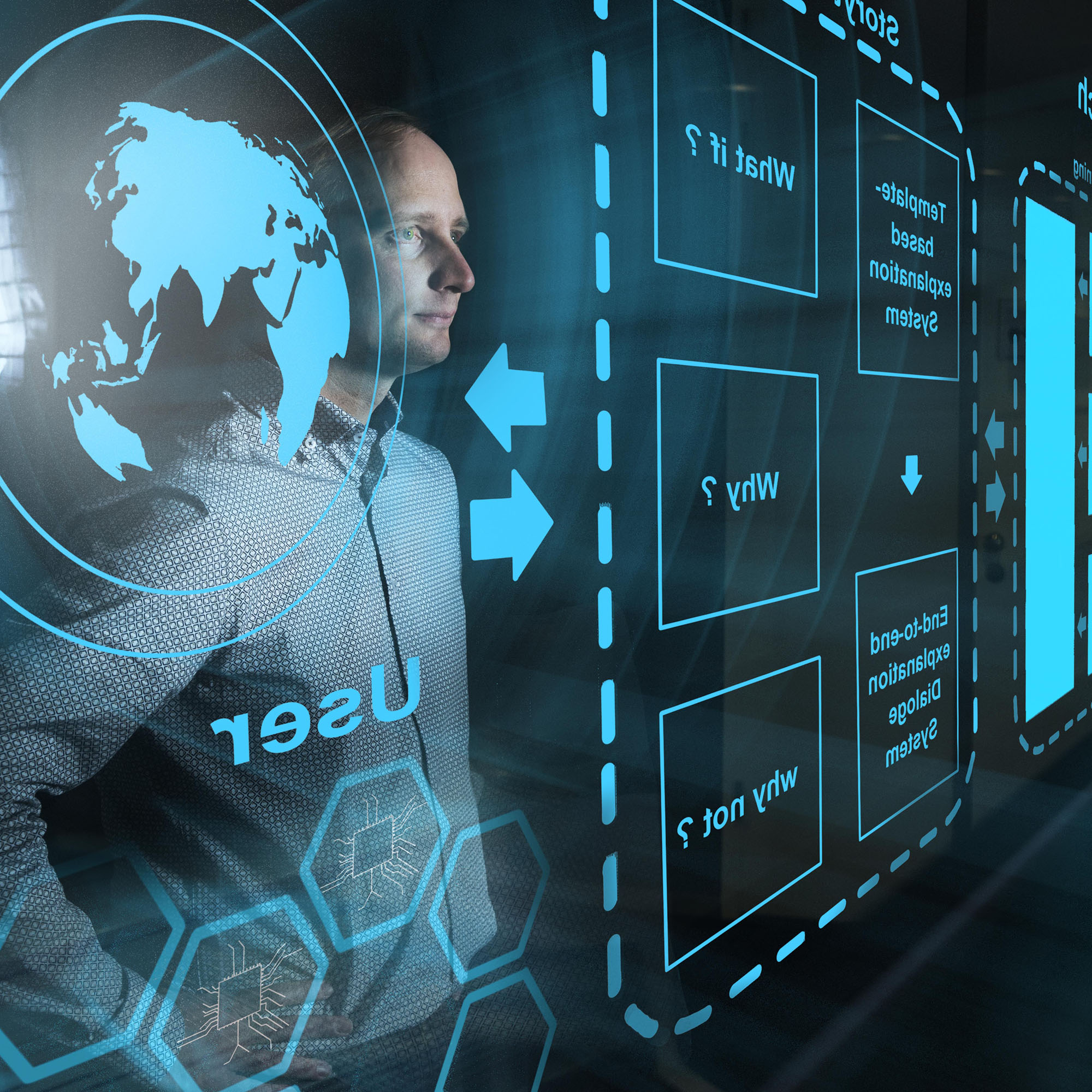Big data in healthcare
How can you further improve healthcare with the use of ‘big data’? That question is central to many scientific studies worldwide. Last month, two PhD candidates at Maastricht University defended their theses based on this same key question. They share a theme (cancer and big data), and a mission (to show that more is possible than what was previously thought). The rest of their stories show how big the world of big data really is.
One developed an algorithm that reads data from different hospitals and can help predict treatment results before a patient undergoes cancer treatment. The other analysed American and Dutch big data regarding breast reconstruction in women after breast cancer, thus uncovering a world of information that could be of vital importance for the future. One is originally an econometrist and now has a job as a postdoc researcher in the life sciences department at the Centrum voor Wiskunde en Informatica (Centre for Mathematics and Computer Science, CWI) in Amsterdam. The other is a general practitioner and is currently working at the Emergency Department of the Red Cross hospital in Beverwijk. Timo Deist and Parisa Kamali talk about their PhD research.
Timo Deist: If the data can’t come to the algorithm….
When Timo Deist joined the research group of professors Lambin and Dekker at MAASTRO Clinic in 2014, they had already been working on developing a network structure with five oncology hospitals in the Euregion. “I completed the first analyses on the network”, he explains, using machine learning techniques, also known as Artificial Intelligence (AI). “Basically, it’s building an algorithm that you train to understand data. Compare it with a baby without any knowledge or experience, who learns by being exposed to that.”
…then the algorithm has to go to the data
But how do you expose the algorithm to tons of data, while regulations for sharing personal (medical) data are so strict? “We figured: if the data cannot come to the researcher and the algorithm, then the algorithm has to go to the data, like Amadou Gaye and colleagues put it back in 2014.” So the data stays in the hospital, the algorithm travels there via a specially built network, learns from the anonymised data, moves on to the next hospital and so on. “This way, you can, for instance, predict the outcome of a treatment for a patient before it’s applied—the success rate and the risk of side effects.”

Will big data radically change healthcare?
Parisa Kamali: “There are people who say that big data will have the same revolution in medicine as antibiotics did in its time. You can indeed answer many different types of questions with it, but at the moment I think there are still too many questions, such as: Who owns the data? And how do you guarantee privacy?”
Timo Deist: “The general notion is: big data is going to solve everything. But I think we need to watch out that we don’t promise too much. Machine Learning has the potential to help and improve, but I would like to tone down the promises. All the machines need to be understandable, not a black box, for doctors to be able to trust them and use them. And you need doctors to cooperate with us, because we data science people don’t know medicine.”

Analysing data from 20,000 patients
During Deist’s PhD, the network was expanded with hospitals in, for instance, the US, UK, China, Australia and Italy. For one of his studies, eight of these hospitals were connected with the network and the challenge then was to do an analysis on more than 20,000 patient samples in only three to four months. For a scientific study, that is quite a short time span. “It was about lung cancer. We collected tumour staging information of the patients and we built a prediction model to predict two years survival of patients, based on the tumour staging.”
“This is not just some crazy idea”
The goal of this study was to show that it’s possible to scale up to 20,000 patients and speed up scientific research this way, without the risk of data leaks for hospitals. “The technology is usable; it’s not just some crazy idea”, Deist says. “The technology I’ve helped create can be further developed for applications in medical practice. A PhD colleague built an interface for doctors to do fast queries in the databases to answer specific questions for their new patients.” For personalised medicine to become a reality, you need an understanding of lots of patient data and AI can help with that, Deist explains. “But you also need trust, from the participating hospitals and from doctors who have to rely on an algorithm. And since we are not computers, my supervisors have invested many years in that.”
Timo Deist obtained his PhD on 5 April 2019 with his thesis ‘Distributed learning and prediction modelling in radiation oncoloy’.
Parisa Kamali: big data essential for optimum care
Her frustration about the fact that as a doctor in training she could not distinguish a good from a bad scientific study led Parisa Kamali to the United States a few years ago. She would gain six months of experience in scientific research, but this led to an almost three-year stay at Harvard University and a PhD. She was a senior research fellow in the lab of Prof. Lin, supervised students from home and abroad, worked with inspiring people and developed a passion for big data. “As doctors, we’re not offering our patients optimal care if we’re not using big data”, she is convinced. In order to get her message across in the best way, after her PhD defence at UM she organised a symposium with all stakeholders based on the question: How can we further transform healthcare using big data?

Data in the US is more accessible (and there’s more of it)
Access to databases with patient information for scientific research is already somewhat further developed in the US than in the Netherlands. “In that the Dutch Elektronisch Patiëntendossier (Electronic Patient Record, EPD) is still relatively new and we do not yet work together very often to optimise care. In addition, you have much larger numbers in America, of course”, says Kamali. Determined and with a lot of trial and error, she familiarised herself with the world of big data research. She primarily studied the care given to women with breast cancer and in particular women who underwent breast reconstruction.
Complications do not appear to increase with age
More than 60% of women who get breast cancer are over the age of 60 and only 4% to 14% of them undergo breast reconstruction. Doctors think that the chance of complications is greater the older you are, and therefore don’t offer it as standard care. “In the database, we researched how many complications occur in each age category. This was found to remain the same across all ages, while the number of reconstructions decreases significantly as the patient’s age increases. The data actually support the message that as a doctor you should mainly look at the patient in front of you. One 60-year-old is not the same as another.”
With big data, the facts are there for the taking
Another notable finding from her thesis has to do with the use of innovative, more patient-friendly reconstruction techniques. It turns out that women with a higher income, from a wealthy region and with more expensive insurance, were offered this new technique more often than women with darker skin and a lower income. “Facts like that are there for taking in the data and you can use this to implement governmental policy to create more awareness among those involved.”
Experience from the work of an emergency room doctor
Because of her work at the Emergency Department, Kamali also clearly sees the importance of sharing patient records. She is regularly confronted with patients for whom no medical history is available, which often makes diagnosis difficult. Calling and faxing with other hospitals delays care provision unnecessarily, according to the young doctor. “We’re late to the game. To be able to offer optimal care to our patients, we have to take advantage of the digital revolution and steer it in the right direction. Sharing patient data nationwide, while still guaranteeing privacy, is part of that.”
Parisa Kamali Sadeghian obtained her PhD on 17 April 2019 with her thesis ‘Breast reconstruction: Trends and variation using big data’.
Also read
-

Frederik Claasen, the head of policy at our partner organisation Solidaridad Network on the opportunities and obstacles facing smallholder farmers in their data ecosystems.
-
After several rocky years, Maastricht University alum Lea Vink has found her feet in Vienna. Professionally, she is taking new steps at the crossroads of aviation and organisational psychology. And on a personal level, luck has smiled on her since her transition from man to woman.
-
Computers are already capable of making independent decisions in familiar situations. But can they also apply knowledge to new facts? Mark Winands, the new professor of Machine Reasoning at the Department of Advanced Computing Sciences, develops computer programs that behave as rational agents.

